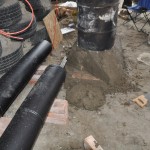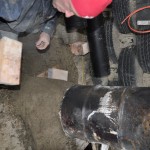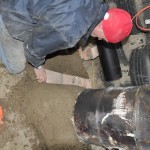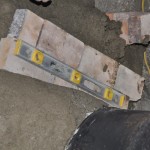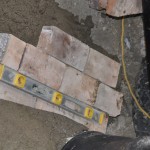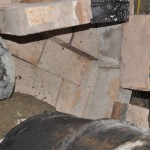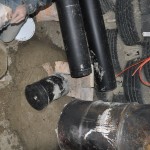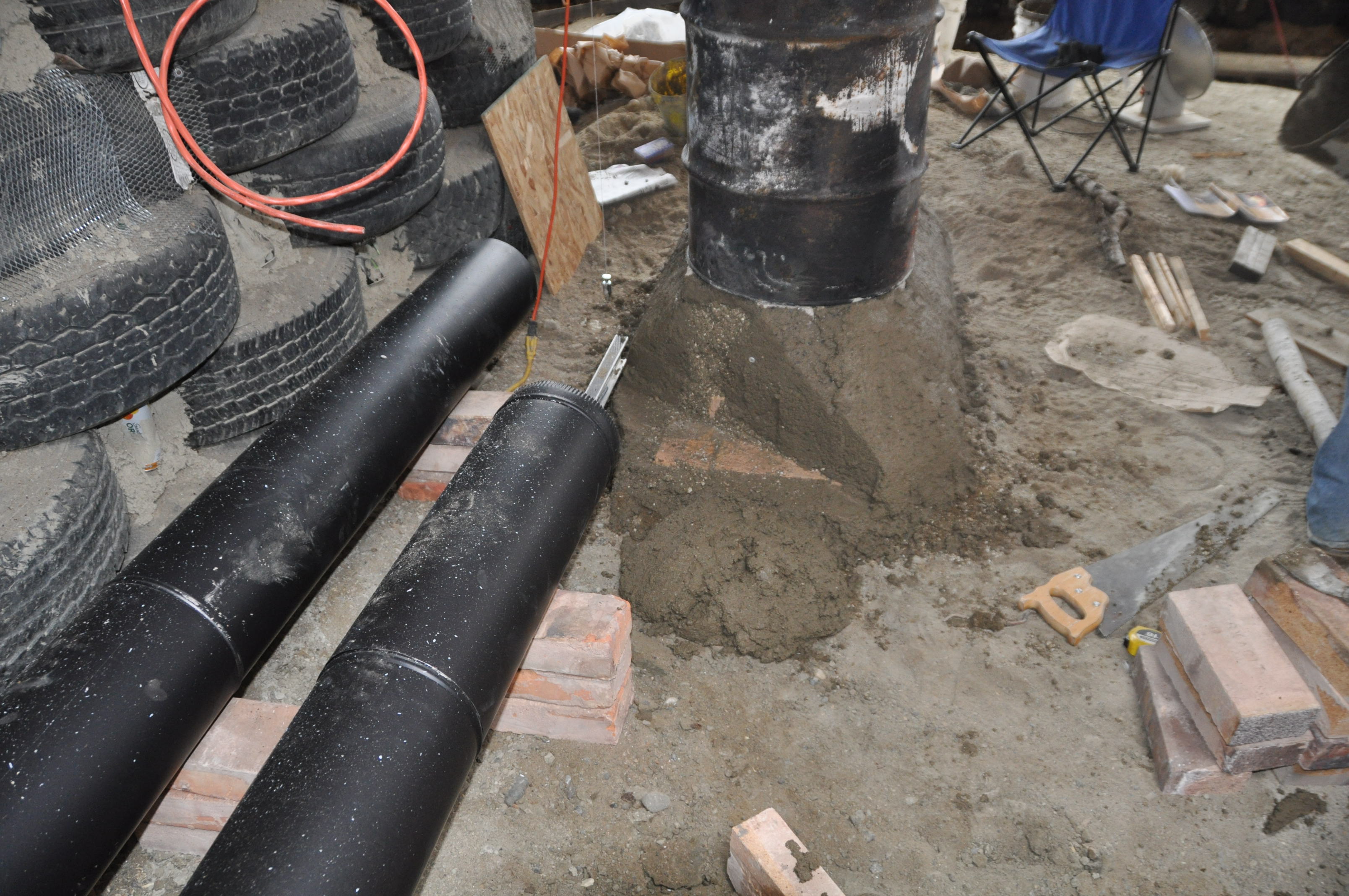
First, I got lots of advice on my last post. I mentioned that we struggled with the perlite/clay slip because it did not stick together and crumbled very quickly. A number of people pointed out that this is exactly what you want with this insulation to do, as adding more clay will reduce its ability to insulate. (We realized this when we did it, but felt it was acceptable to make things work.) The better solution is to form the next layer of cob beside the stove leaving a pocket to pour the insulation into AFTER. (Here is a picture of this.) Thanks for the feedback, next time we will do it differently!
Today we worked on the manifold. The manifold links the heat riser to the combustion bench … the combustion gas exits the bottom of the heat riser, passes through the manifold and enters the 8″ heat exchange pipe. The construction of the manifold is a little bit of a black art in rocket mass stoves; I found it hard to track down a detailed explanation, and there are different ways to do it. The best description I found was from Erica Wisner (an RMH guru) who wrote about three manifold options; ducting, a masonry box and a sculpted cob structure.
Ducting is simply a piece of ducting that goes from a square profile larger than 8″ to an 8″ diameter profile. The square end of the duct is shaped to fit the base of the heat riser and the heat exchange pipe is attached to the round profile. The masonry box is simply a cob and brick box located at the base of the heat riser. Gas from the base of the heat riser flows into this box, and exits through the heat exchange pipe that is mortared into the other edge of the box. The box should be deep enough to catch ash and have a clean out. The sculpted cob structure is similar to the box except it is formed entirely in cob. The sculpted option is the most elegant (in my opinion), but being an engineer I chose the practical box. I may try to sculpt the inside of my box with clay slip to round out the corners … we’ll see! Tell an engineer that you are going to sculpt anything and you might as well be speaking Greek … how do you measure or DUPLICATE a sculpture … honestly!
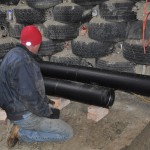 First thing this morning we laid out the ducting and argued about its placement (we needed to figure out where the ducting met the heat riser in order to place the manifold). Our walls are non-combustible (especially when they are covered in cob) but we kept the stove pipe a minimum of four inches from the wall.
First thing this morning we laid out the ducting and argued about its placement (we needed to figure out where the ducting met the heat riser in order to place the manifold). Our walls are non-combustible (especially when they are covered in cob) but we kept the stove pipe a minimum of four inches from the wall. 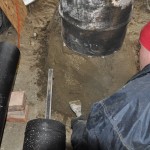 Additionally, we made sure the top of the pipe was under 14″ from the top of the finished floor as we want a minimum of 4″ of cob covering the pipes. Once we had the pipe roughly placed I started cutting away the cob (much to Sandra’s dismay) to create a base for the manifold.
Additionally, we made sure the top of the pipe was under 14″ from the top of the finished floor as we want a minimum of 4″ of cob covering the pipes. Once we had the pipe roughly placed I started cutting away the cob (much to Sandra’s dismay) to create a base for the manifold.
Once we had a level base to work with I laid out a base round of bricks and we cobbed around the edges of them. After that I formed a box out of brick and cob. I mortared the brick in place with the last of the refractory cement we had. I put an 8″ diameter clean out pipe running perpendicular to the heat exchange pipe and cobbed both pipes into the box. I fitted the cap to the clean out pipe before I started placing cob so that the pipe did not go out of a circular shape.
We had the stove lit most of the day and it continued to dry out the clay. At the end of the day we dropped the heat riser barrel over the heat riser to direct the hot exhaust gas down onto the wet cob … it seems to be helping a lot to bake the cob.
A word to the wise; cutting stainless steel is HARD work, my arms are still shaking and Katie is still vibrating from holding the barrel. I went through three sawzall blades getting the top off of the barrel. Stephen and I had fun burning off the residue of Tea Tree oil originally stored in the barrel.
Tomorrow I hope to fit a cover over the manifold, place and insulate the insulation drum, and place the heat riser barrel. After that we will just have to hook up the flue …
